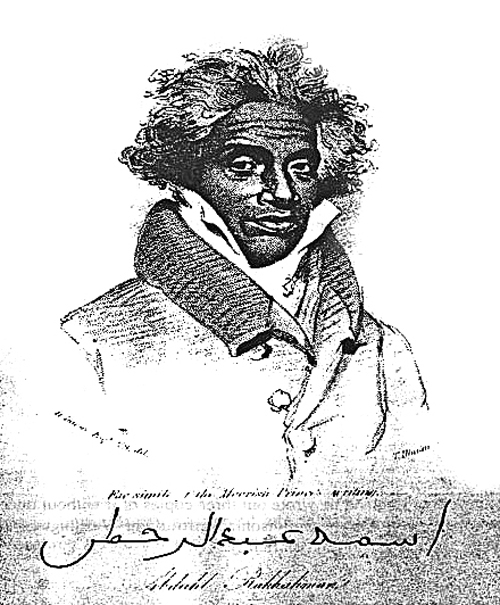The struggle of slaves in North America is a story worth telling
Munirul-Haq Raza
Contributor

Although there is more to Black history than slavery, there is a lot about slavery that people don’t know. For instance, who were the slaves, and what were their beliefs? When we begin to ask these questions we discover a wide range of struggle.
One such struggle is that of the Muslim slaves who have been a part of the North American landscape from beginning, since the first slave ships arrived. Many of them were everyday people, some were scholars, and one was even a prince.
Abdu-l-Rahman Ibrahim Ibn Sori (aka Abdul-Rahman), born in Timbo, West Africa (Fouta Djallon), studied at Timbuktu in Mali. He was leader of one of his father’s military divisions and was married, with a child. During a battle, he and some of his men were attacked, captured, and sold into slavery.
Rahman ended up in Natchez, Mississippi on the plantation of Thomas Foster. Being a natural leader he rose to a position of authority on the plantation and was able to grow and sell some of his own crops at the local market.
One day, he met an old friend whose life Rahman’s father had saved. This man, Dr. John Cox attempted, unsuccessfully, to buy Rahman.
But another opportunity for freedom would come. In 1826, Rahman wrote a letter to his relatives in Africa. A local newspaperman, Andrew Marschalk, sent a copy to Senator Thomas Reed in Washington, who forwarded it to the US Consulate in Morocco. Since Abdul-Rahman wrote in Arabic, Marschalk and the US government assumed that he was a Moor.
After the Sultan of Morocco Abderrahmane read the letter, he asked President Adams and Secretary of State Henry Clay to release Rahman.
In 1828, after spending 40 years in slavery, he was freed by the order of President John Quincy Adams and Secretary of State Henry Clay after the Sultan of Morocco requested his release. Foster released Rahman under the condition that he would return to Africa immediately, and not live as a free man in America.
Rahman, along with his new wife, stayed and tried to raise money to free their children and grandchildren, but they could not. Defeated, Rahman returned to Africa. Later, some of his family was freed and returned to Africa while others remained slaves in Mississippi.
Some of Rahman’s descendants were reunited and filmed in a PBS documentary which premiered on February 4, 2008. The film, Prince Among Slaves, is based on a book of the same title by Dr. Terry Alford.
Rahman’s story helped teach me about the history of slavery in America. Before, it felt distant to me; it was something terrible that had happened in the past.
I grew up with this type of thinking until I began watching many films like Prince Among Slaves and reading books like Servants of Allah: African Muslims Enslaved in the Americas, by Sylviane Diouf. The book talks about the lives of Muslims who were captured from Africa and sold as slaves, and their struggles to resist the oppression of slavery while trying to maintain their identity and faith.
After reading this book, I was able to connect myself to the struggles of slaves in North America like never before because I could connect with how they felt. This book also made me feel like I had a greater connection with the history of the Americas, not just feeling like someone who is fresh off the boat with no roots in this land. I could imagine the Muslim slaves’ struggles through this book.
Diouf’s concluding statement best describes the struggles of Muslim slaves:
“Turbaned men and veiled women, their prayer beads around their necks, chopped cotton, cut cane, and rolled tobacco from sunup to sundown. Like other slaves, they were beaten, whipped, cursed, raped, maimed, and humiliated. They saw their families torn apart and their loved ones killed. […] The African Muslims may have been, in the Americas, the slaves of Christian masters, but their minds were free. They were the servants of Allah.”
Stories about slaves did not only originate from America, but in Canada as well. Muslims have been part of the Canadian landscape since its very foundation. Muslims slaves were sent to Nova Scotia. Some freed Muslims slaves even escaped to Canada.
According to Sylviane Diouf, Muslim slaves made up anywhere from a quarter to a third of the slave population. They have led and participated in almost every slave rebellion, and also in the American Civil War. They struggled to maintain their identity. They tried their best to observe their customs and even fasted while working sun up to sundown, and prayed when they could. They tried to pass whatever they could on to their children, but being slaves, there was very little they could do. There are many stories of such struggles. I chose but a few to highlight a forgotten, but important, legacy.


